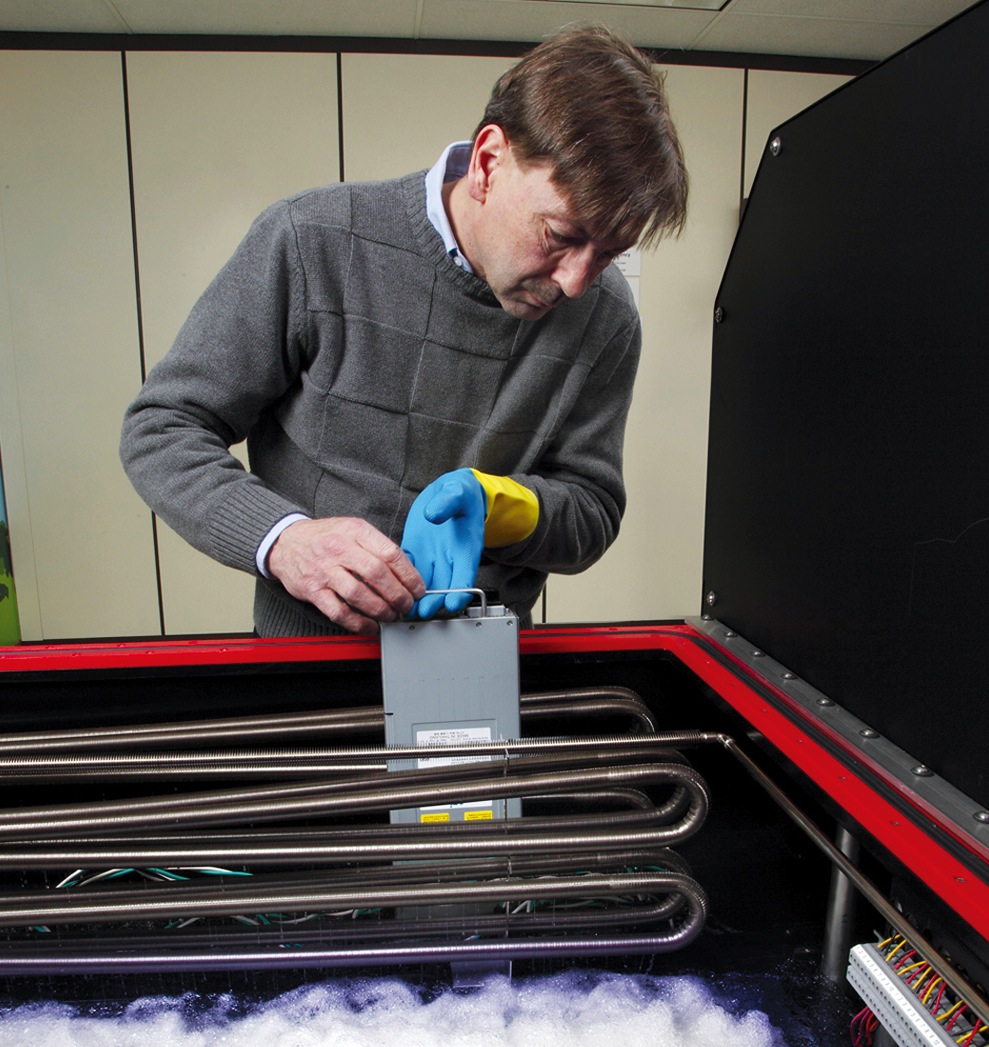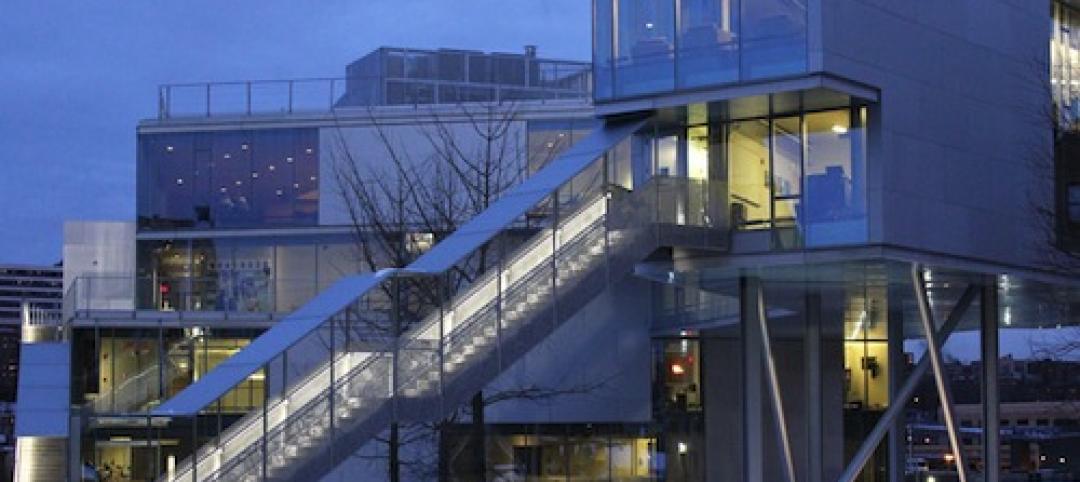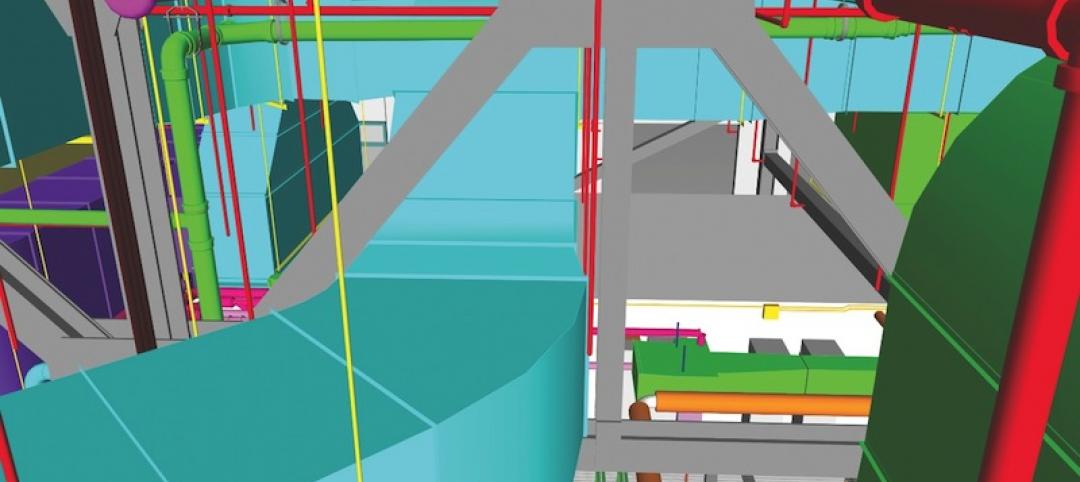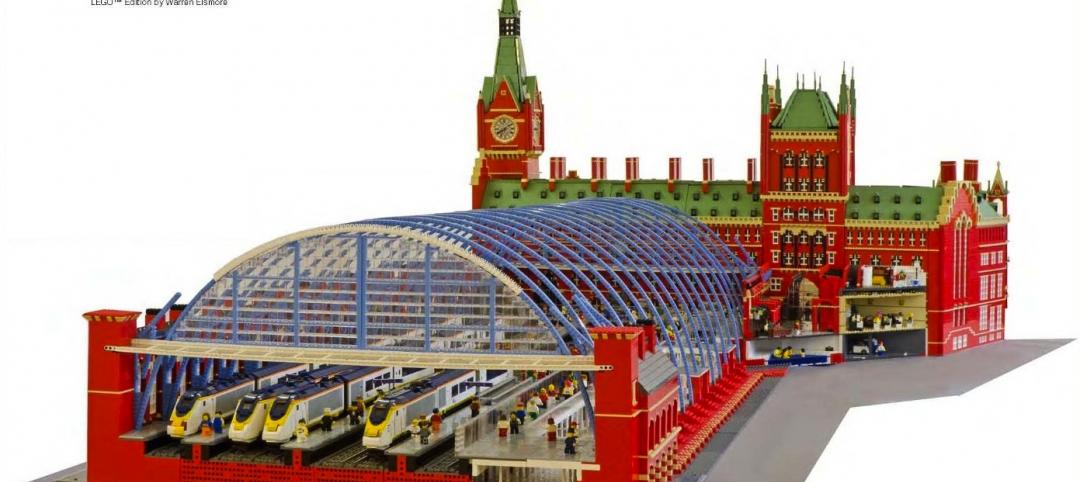In the rush to slash energy consumption in power-hungry data centers, design teams, equipment manufacturers, and tech companies have been developing clever, low-energy cooling solutions—from Facebook’s open-rack server setup with exposed motherboards, to Skanska’s eOPTI-TRAX liquid refrigerant coil system, to Google’s evaporative cooling schemes.
Solutions like these have helped data center facility operators achieve unprecedented energy performance levels, with power utilization effectiveness (PUE) ratios dipping below 1.10 in some instances. This means that less than 10% of the total energy consumption in a facility is attributed to noncomputing functions, such as air-conditioning and lighting.
Now, a new technology promises to push the limits of data center energy efficiency even further. Called immersive cooling, it uses a liquid instead of air to cool the servers. LiquidCool Solutions, Green Revolution, and 3M are among the pioneers of this technology. Each system works a bit differently, but the basic idea is to submerge the motherboards in tanks filled with nonconductive fluid, which absorbs the heat generated by the processors.
LiquidCool Solutions, for example, uses an enclosed server module and pumps dielectric fluid through the server enclosure. Green Revolution uses a tub full of dielectric oil and circulates the liquid through the tubs. 3M also uses the tub approach, but the fluid boils and then is condensed to reject the heat.
By using liquid-based cooling at the server level, the need for air-conditioning is greatly reduced, or even eliminated in some climates. The same goes for traditional HVAC equipment and systems—chillers, fan units, raised floors, and so on.

The Allied Control 500 kW immersion-cooled data center in Hong Kong is capable of delivering a PUE of just 1.02. The standard, 19-inch server racks use 3M Novec Engineered Fluids to enable tight component packaging for greater computing power in less space, according to Allied. Its open-bath design permits easy access to hardware and eliminates the need for pressure vessel enclosures and charging/recovery systems. PHOTO: COURTESY ALLIED CONTROL
“In most parts of the world, compressorized cooling would not be required with immersive cooling, since the liquid temperatures can be at a level where direct heat rejection using outdoor condensers or cooling towers would be sufficient,” says Thomas Squillo, PE, LEED AP, Vice President with Environmental Systems Design, who is currently researching the technology for the firm’s data center clients. “The fan energy is also eliminated, both in the HVAC system and in the server itself. Fluid pumping energy is very low.”
Other advantages of the cooling technology, according to Squillo:
• Increased performance and service life of the computer chips by eliminating heat buildup and problems related to contaminated air and dust.
• Ability to deploy data centers in extremely harsh environments without greatly impacting energy performance.
• Potential construction cost savings by downsizing or eliminating traditional HVAC systems.
Other than a few pilot projects, including a Bitcoin mining data center in Hong Kong and a Lawrence Berkeley National Laboratory-led installation in Chippewa Falls, Wis., immersive cooling technology is largely untested. A year into the Bitcoin pilot, the data center operator reported a 95% reduction in cooling costs.
AEC professionals are starting to realize the potential for immersive cooling, especially for high-performance computing centers and consolidated, high-density data centers.
“Large data centers that have many homogenous machines at high density—like those operated by Internet and cloud providers—are a good application,” says Squillo. “Small footprint and minimal energy use are very important due to the volume of servers. These can be deployed in remote areas where space and energy are cheap, but where air quality may be a concern, without having to worry about the data center air.”
TRICKY DESIGN CONSIDERATIONS
Before the technology can be implemented, says Squillo, several nettlesome design factors specific to immersive cooling have to be addressed:
• Piping distribution to the racks and cooling units requires redundancy and valving to accommodate equipment maintenance without disrupting server performance.
• Additional equipment and space are needed to drain fluid from the tanks for server maintenance.
• Local code requirements may limit the amount of fluid that can be stored in a single room.
• For the foreseeable future, it’s unlikely that a large data center would be 100% liquid-immersion cooled. This means provisions will have to be made for both air- and liquid-cooling systems, which will require additional space in the data hall and mechanical room.
“I think that some form of this technology will definitely be the direction the data center market will take in the future,” says Squillo. “The market just needs to mature enough for owners to trust the technology and demand servers that are designed for a particular type of liquid cooling. In the short term, I see large companies and server manufacturers doing small-scale installations to test the concept, before wanting to implement it at a large scale.”
Related Stories
| May 2, 2013
A snapshot of the world's amazing construction feats (in one flashy infographic)
From the Great Pyramids of Giza to the U.S. Interstate Highway System, this infographic outlines interesting facts about some of the world's most notable construction projects.
| May 2, 2013
Holl-designed Campbell Sports Center completed at Columbia
Steven Holl Architects celebrates the completion of the Campbell Sports Center, Columbia University’s new training and teaching facility.
| May 2, 2013
BIM group proposes uniform standards for how complete plans need to be
A nationwide group of Building Information Modeling users, known as the BIMForum, is seeking industry input on a proposed set of standards establishing how complete Building Information Models (BIMs) need to be for different stages of the design and construction process.
| May 2, 2013
New web community aims to revitalize abandoned buildings
Italian innovators Andrea Sesta and Daniela Galvani hope to create a worldwide database of abandoned facilities, ripe for redevelopment, with their [im]possible living internet community.
| May 1, 2013
A LEGO lover's dream: Guide to building the world's iconic structures with LEGO
A new book from LEGO master builder Warren Elsmore offers instructions for creating scale models of buildings and landmarks with LEGO.
| May 1, 2013
New AISC competition aims to shape the future of steel
Do you have the next great idea for a groundbreaking technology, model shop or building that could potentially revolutionize the future of the steel design and construction industry? Enter AISC's first-ever Future of Steel competition.
| May 1, 2013
Data center construction remains healthy, but oversupply a concern
Facebook, Amazon, Microsoft, and Google are among the major tech companies investing heavily to build state-of-the-art data centers.
| May 1, 2013
Groups urge Congress: Keep energy conservation requirements for government buildings
More than 350 companies urge rejection of special interest efforts to gut key parts of Energy Independence and Security Act















